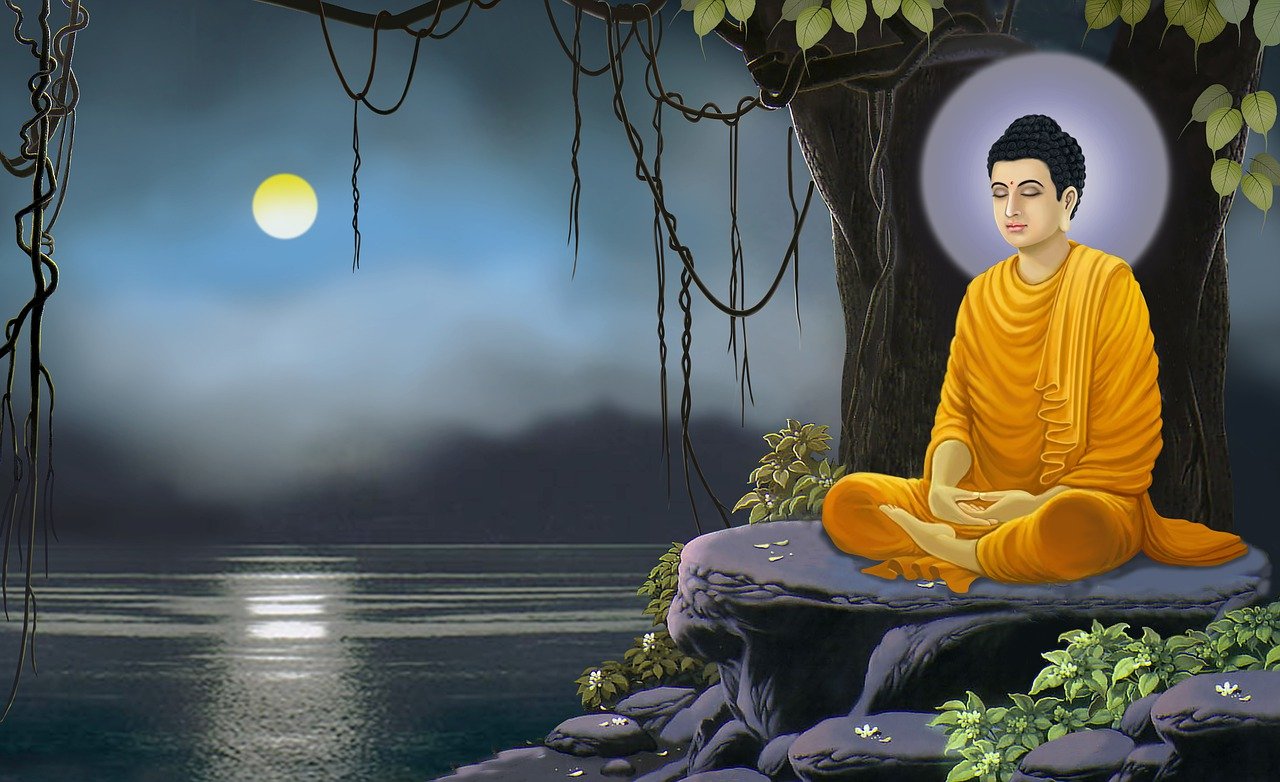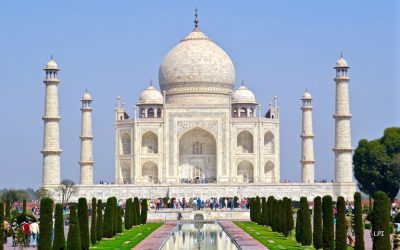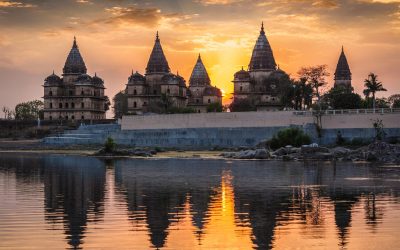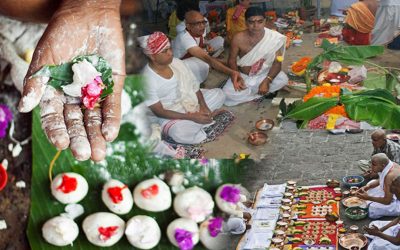Life of Buddha
The Lord Buddha was born to King Suddhodana and Queen Maya in the royal family of Kapilvastu. On the 5th day of the prince’s birth, Saint Kondanna predicted that Siddhartha Gautama would become a world-famous sage one day.
His father thought that if he could protect his son from all the sadness and gloom of the world, his son would become a great King and never follow the path of sainthood as the sages predicted. So, the prince was brought up with all the riches and amenities of life. He was married to Yasodhara at the age of 16 and blessed with a son named Rahul. Everything in the Kingdom remained fine and shielded; no elderly, aged, or sick were allowed to meet or cross the Prince’s path. However, he always felt this emptiness in his life and knew that this material wealth was not the ultimate goal of life.
It is said that, one day he left his palace to meet his subjects and encountered an old man and that is when things changed. His charioteer had to explain to him the miseries of life and the ultimate end, on being requested repeatedly by the prince. At the age of 29, Siddhartha Gautama renounced his worldly joys and left his family in search of the answers to life. He started living as a hermit and begged for alms to support his living.
He learnt yoga and meditation but his thirst for the knowledge didn’t quench. Then he decided to follow the Buddhist way of meditation and started meditating under the famous Bodhi Tree in Bodh Gaya, India. He vowed to continue meditating until he achieved awakening. It was after the arduous practice of 49 days that Siddhartha Gautama became Lord Buddha. At the age of 35, he attained enlightenment. “He became a savior, deliverer, and redeemer and decided to spread the message to the masses through Buddhism.
What Is Buddhism?
Buddhism is based on the teachings of Siddhartha Gautama. The religious philosophy of Buddhism is contained in the first sermon of Buddha at Sarnath. He experienced a profound realization of life, death, and existence; He came to be called “the Buddha,” which means awakened one. Lord Buddha does not believe in sacrifices and rituals and thus condemns animal sacrifices. He taught methods for gradually overcoming our negative minds such as anger, jealousy, and ignorance, and developing our positive minds such as love, compassion, and wisdom. Through this, we will come to experience lasting happiness and peace. He taught us how to realize truth for ourselves Lord Buddha laid stress on good actions and deeds, to lead an honest, disciplined, and upright life.
Buddhism is divided into the Hinayana and the Mahayana. Hinayanas are those who denied the existence of God and followed the doctrine of Buddha strictly. The followers of Mahayana believed that Buddha was an incarnation of God. Buddhism religion is the fourth largest of the world’s religions. The focus of Buddhism is on practice not on belief. The major outline of Buddhist practice is the Eightfold Path. Buddhist teachings should not be accepted on blind faith, understanding what is taught is an important part of that discipline. The foundation of Buddhism is the Four Noble Truths i.e. the truth of suffering, the cause of suffering, the end of suffering, and the path that frees us from suffering. Buddhism is the process of realizing, exploring, understanding, and testing.
The Main Principles of Buddhism
The main principles of Buddhism are the teachings in the form of Three Jewels, ‘The Noble Eightfold Path’, ‘The Four Noble Truths’, ‘The Five Precepts’, ‘The Three Marks of Conditioned Existence’ and ‘Vegetarianism’. The most important ones are described below.
Triple Jewels
Taking refuge in The Triple Gems, i.e. the Buddha, the Dharma, and the Sangha; does not mean self-surrender, or total reliance on an external force, or third party for help or salvation.
The Four Noble Truths Are:
Dukkha – The Suffering, Samudaya – The Cause of Suffering, Nirhodha – The End of Suffering, and Magga – The Path that frees us from Suffering. These are the foundations of Buddhism given by Buddha in his first sermon after his enlightenment.
The Eightfold Path:
The Eightfold Path means by which enlightenment may be realized. Followers point to three main sections within ‘The Eightfold Path’ Ethical Conduct, Wisdom, and Mental Discipline.
There is a path to the cessation of suffering, the ‘eightfold path’ of right resolve, right views, right speech, right livelihood, right action, right effort, right mindfulness, and right concentration.
The Five Precepts: These are basic training rules that are strictly followed by all Buddhists.
- To refrain from destroying living creatures.
- To desist from taking that which is not offered.
- To not indulge in sexual misconduct.
- Not to indulge in incorrect speech (Refrain from lying, immoral speech,
abusive language, and gossip). - Refrain from intoxicating drinks and drugs which lead to carelessness.
Symbols Of Buddhism
Siddhartha Gautama himself was unwilling to accept images of himself and used many different symbols to illustrate his teachings. The following are eight auspicious symbols of the Buddhist faith, and it is said that these were the gifts from God to Buddha at the time of his achieving enlightenment.
- Canopy: Protection
- Umbrella: Dignity
- Lotus flower: Purity
- Fishes: Abundance
- Conch shell: Calling to prayer
- A vase containing heavenly elixir: Enduring peace
- Wheel: The majesty of the law
- Endless knot: Destiny

Buddhist Festivals
1. Buddhist New Year
Buddhist New Year is celebrated for three days in April beginning from first full day of moon in many Asian countries including Thailand, Burma, Sri Lanka, Cambodia and Laos.
2. Vesak
This festival celebrates the Birthday of Buddha. The birth, enlightenment and death of Buddha are all celebrated in one day. The festival takes place on the first full moon of May.
3. Magha Puja Day
Magha Puja ceremony takes place in March on full moon day of third month as per lunar calendar. The day is very auspicious and it is to remember an important event in the life of the Buddha; the fourfold assembly.
4. Asalha Puja Day
Asalha Puja is to mark the first sermon of Lord Buddha, to remember and honour him on full day of eighth month as per lunar calendar.
5. Uposatha
The four holy days in each month during the full moons, new moons and quarter moons. There are four holy days in each month during full moons, new moons and quarter moons. On these days, all Buddhists observe fasting and do not eat any meal.
6. Kathina Ceremony
In this ceremony new robe is offered to Buddhists monks.
7. Abhidhamma Day
This day celebrates the event when the Buddha is said to have gone to the Heaven to teach his mother. It is held on the full moon of April.
8. Songkran
This particular Buddhist festival is celebrated for many days in the middle of April. It is an occasion when people clean their houses, wash their clothes and sprinkle perfumed water on the monks. This festival is like a spring cleaning.
9. Loy Krathong
This festival takes place on the full moon night of the Twelfth Lunar month. People carry bowls made of leaves, which contain candles, flowers and incense sticks. Then float them in water and as they go, all bad luck is supposed to disappear.
10. The Ploughing Festival
This festival takes place in May, when the moon is half-full, two white oxen pull a gold painted plough, followed by four girls dressed in white who throw rice seeds from baskets. The festival is to rejoice the Buddha’s first moment of enlightenment at the very young when he was only seven years old.
After Buddha’s death, Buddhism gradually spread in India and then subsequently, throughout the world and particularly in South and East Asia. However, it was at the time of the Indian emperor Ashoka that Buddhism took a pace to reach its height. He promoted the doctrines of Buddhism not only in his empire as Dharma but in other regions as well. It was his promotional campaign that led to the construction of Buddhist religious stupas and monasteries, which further facilitated the spread of Buddhism in countries like Sri Lanka, Tibet, China, and Japan.
The Spread of Buddhism in Asia
Buddhism began to grow and spread outside India starting about the 3rd century. It began to take root in different countries in Asia as they came in contact with Buddhism from the early 2nd century B.C.E.
The first time for Buddhism to spread outside India was in Ceylon (Sri Lanka) in 250 B.C.E. In the 3rd century C.E., Buddhism came to: Burma (Myanmar) during the reign of King Ashoka; Cambodia; China in the 2nd or 3rd century C.E.; and Indonesia in the 3rd century C.E. From the 4th through the 8th century C.E.: Buddhism came to: Korea from China in the 4th century C.E.; to Japan from Korea in 522 C.E.; to Thailand from Burma in the 6th century C.E.; and to Tibet in early 8th century C.E.
Decline of Buddhism in India
A few reasons that led to the decline of Buddhism are; Division into groups ‘Vajrayana’, ‘Hinayana’, ‘Mahayana’, ‘Tantrayana’, and ‘Sahajayana’ led Buddhism to lose its originality, the continuous destructive activity of different fundamentalist Muslim emperors, the use of Sanskrit language, Image worship was started in Buddhism by the Mahayana Buddhists, the ‘Huna’ invasion jolted Buddhism. Therefore, Buddhism died away in India, the land of its birth. However, it continued to grow and expand in other countries to the present day.
Rejuvenation Therapy Tour
Srinagar-Ladakh via Zojila
Palace on Wheels
Sri Lanka
Delhi Agra Day Trip
Agra Overnight Stay Trip
South India Trip
Himalayan Wonder Trip
Classic North India Tour
Bhutan Trip
Classic Nepal Tour
Ladakh Trip
Golden Triangle Tour
Rishikesh Yoga Tour
Ayurveda Tour in Kerala
karnataka & Kerala Trip
Yoga Retreat
Pinda Dan
Essence of Kerala
Ajanta Ellora Tours
Get 20% off On Your First Travel Booking!
Exclusive offer on
Indian Leisure Trips!




















